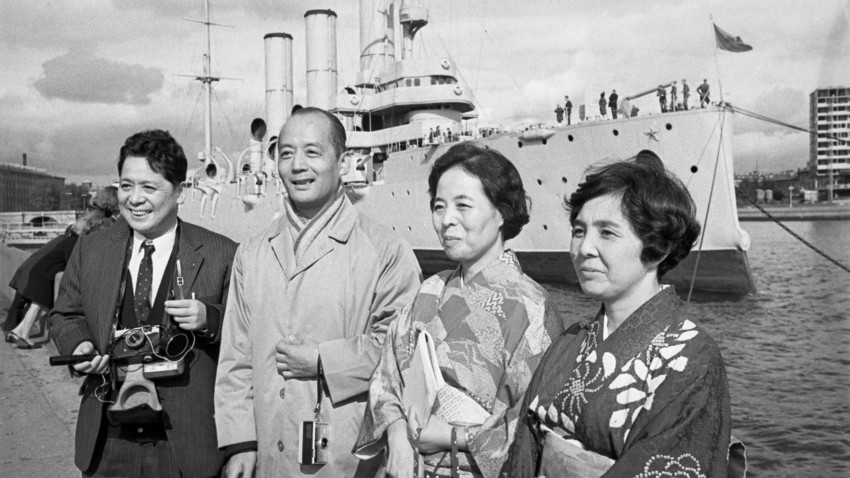
Japanese tourists with the Avrora cruiser in the background. Leningrad, 1968
Rudolf Kucherov/SputnikAlthough the Soviet Union was rather closed off to outsiders, it was still possible to go there. For many foreigners, such a trip was an expensive luxury, but one that gave them the experience of a lifetime.

Intourist poster
Archive imageSoon after the Soviet Union was established, its leadership began thinking about how to attract foreign tourists since the country's economy was in desperate of foreign currency. In 1929, the state joint-stock company Intourist was created and given a monopoly on the sale of tours to the USSR. One of its slogans was: "It is not just a trip, it is a trip into a new world." Foreign tourists were intrigued.

Intourist poster, 1930
Kirill Kallinikov/SputnikSome of the first foreigners to visit the Soviet Union were famous writers, artists and other public figures. Theodore Dreiser came in 1927, Bernard Shaw in 1932 and French writer and Nobel Prize winner Romain Rolland in 1935.
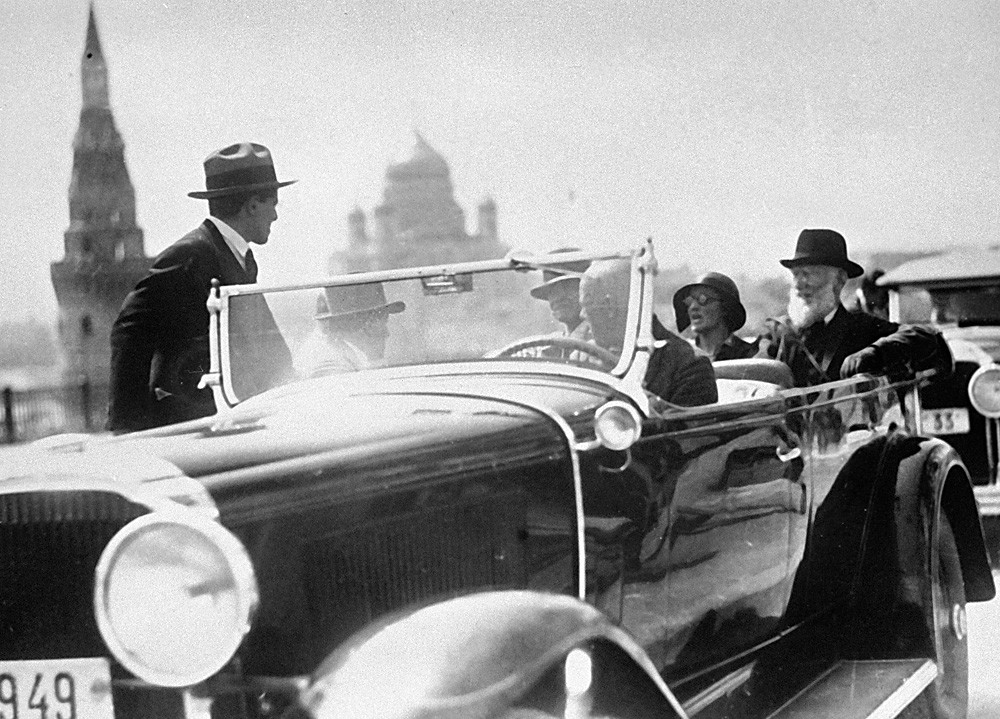
Bernard Shaw in Moscow, 1931
SputnikIn the 1930s, Intourist opened offices in the United Kingdom, Germany, and the United States. Before the start of World War II, some 129,000 foreign tourists visited the USSR. They were offered different itineraries throughout the country, from Moscow to the Russian Far East. Tourists were lured by posters like these, which were created by the best Soviet illustrators.
In addition to Moscow and Leningrad, other major attractions included Crimea, Volga cruises and road trips across the country.
The flow of tourists to the USSR resumed after the war, and in the 1950s the country entered a period of political “thaw.” The Soviet leader Nikita Khrushchev began travelling around the world, and the Soviet Union began hosting international events like the world festival of youth and students. In total, more than 70 million tourists from 162 countries visited the USSR between 1956 and 1985.
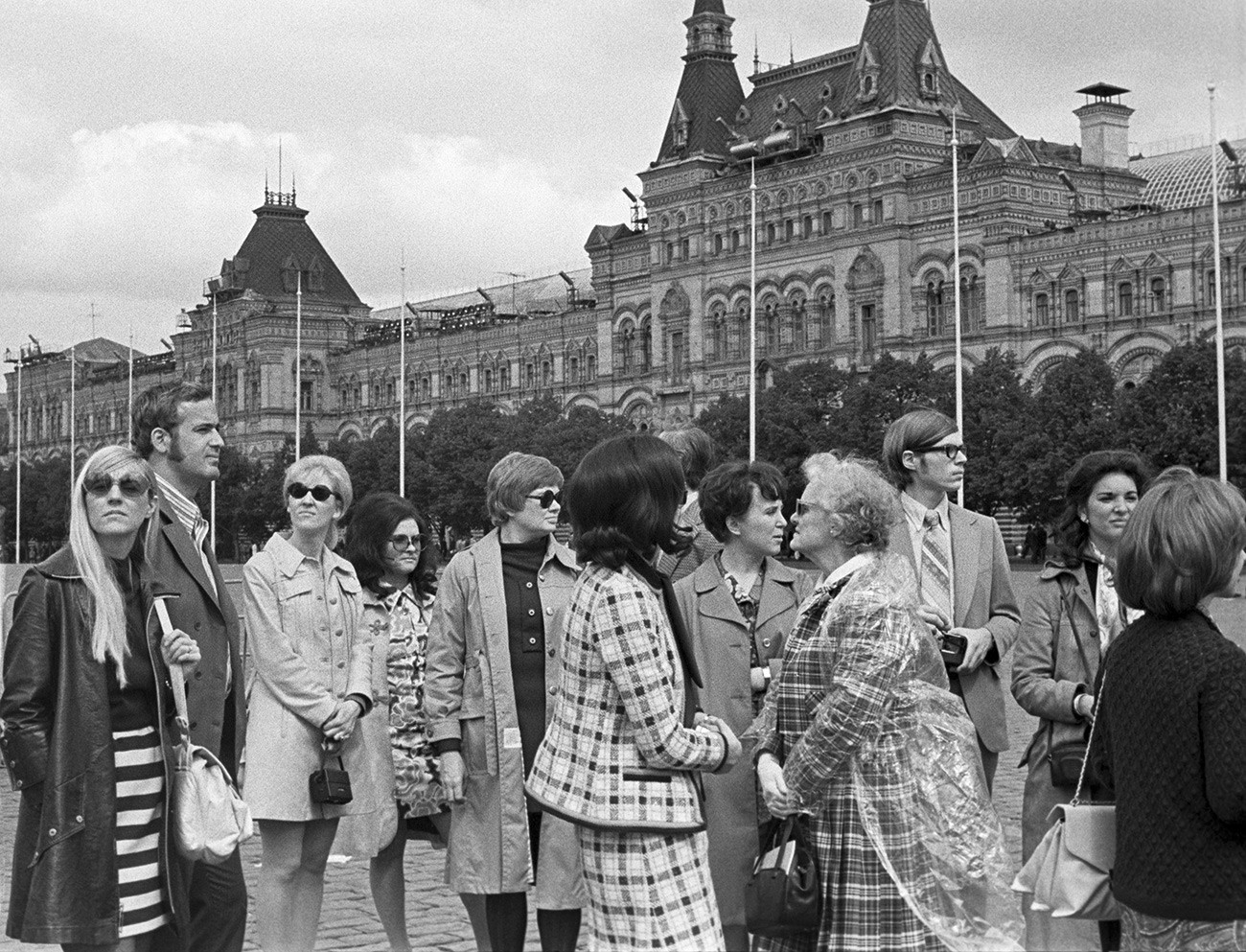
American tourists in Moscow, 1972
Pyotr Nosov/TASSBut at the same time no one was going to let foreigners wander around on their own. The country could only be explored under the watchful eye of an Intourist guide/translator. Any private plans had to be abandoned, and foreign tourists were only shown ideologically impeccable achievements of the Soviet economy and lifestyle.
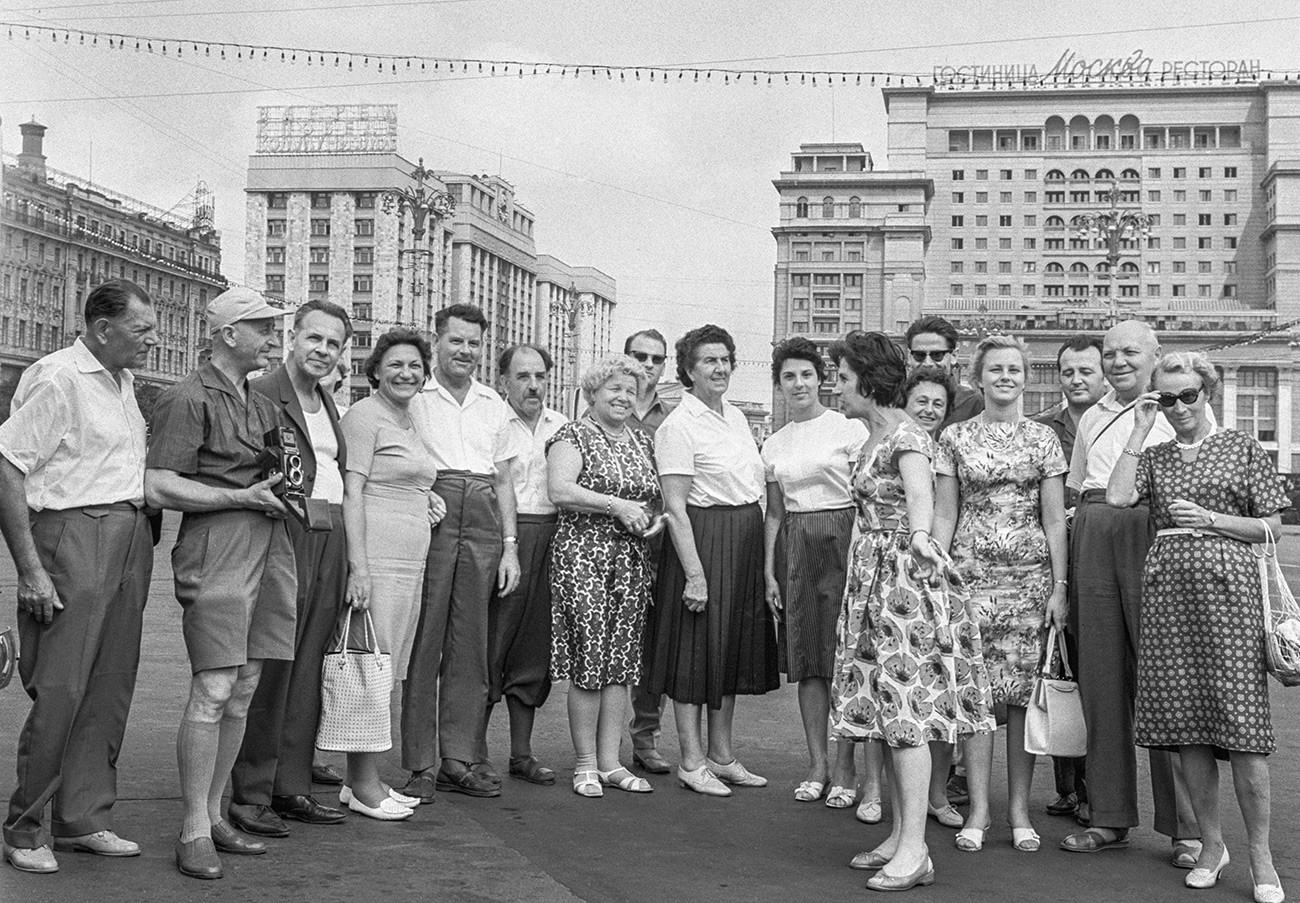
Tourists from Austria in Manezhnaya Square, 1963
Alexander Konkov, Boris Trepetov/TASSThe science fiction writer Robert Heinlein and his wife Virginia visited the USSR with an Intourist group in 1959-1960. Afterwards he wrote about the all-encompassing control the guides exercised on their group, an extortionate exchange rate (4 rubles to a dollar) and glaring gaps between customer service in the USA and the USSR.
["I cannot honestly urge anything short of ‘Luxe’ class because even the best in Russia is often shockingly bad by our standards—bathrooms without baths, even hotels with no baths, tubs with no hot water, plumbing that is 'quaint' or worse, poor cooking, dirty utensils, maddening waits," Heinlein wrote in an article titled Inside Intourist.
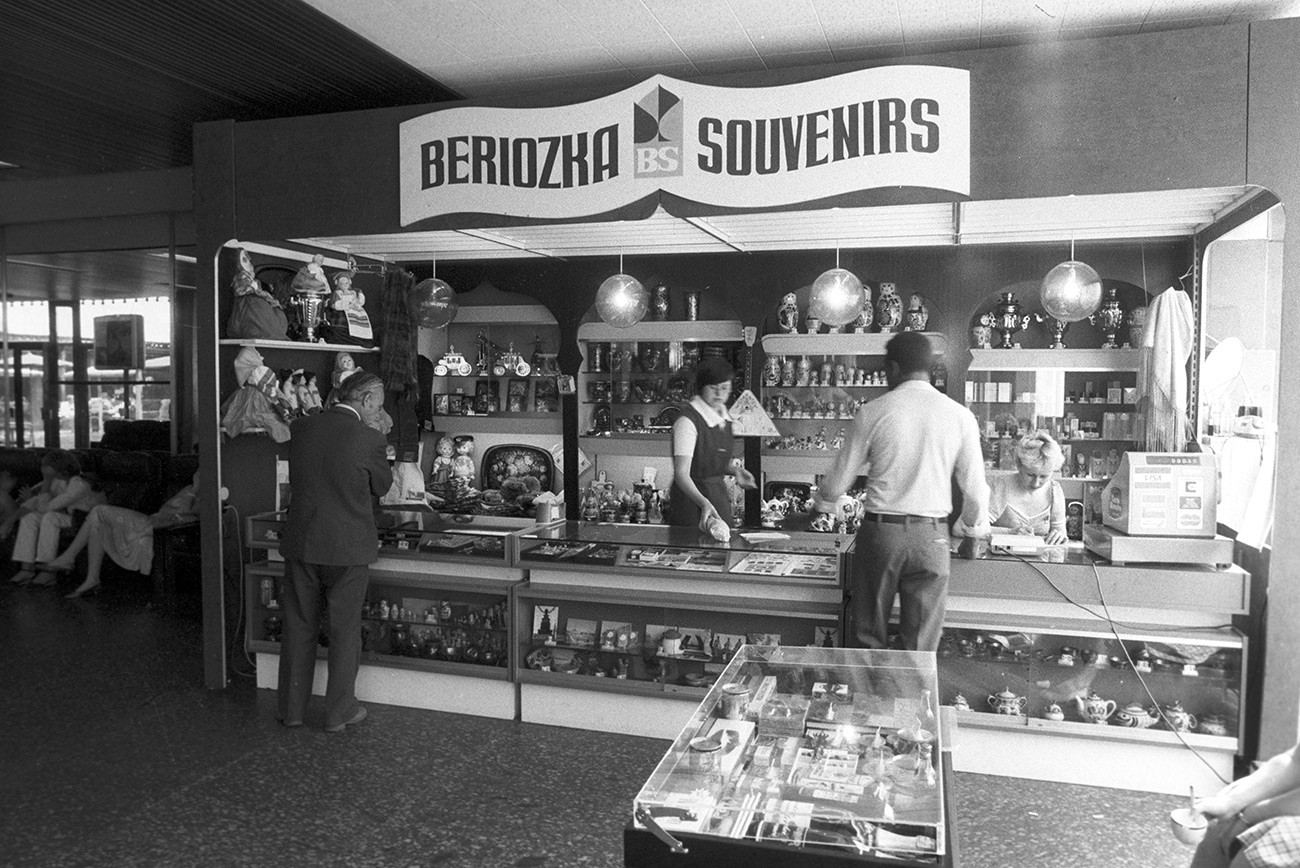
A souvenir shop 'Berezka' at the Intourist hotel. 1983
Alexander Grashchenkov/SputnikHeinlein’s wife even studied Russian to prepare for the trip, but this turned out to be useless because they were “prisoners of Intourist, seeing only what they want you to see, hearing only what they want you to hear.” Heinlein calculated that for an ordinary American, a trip to see socialism in action in the USSR was extremely expensive—around $4,500 per month.
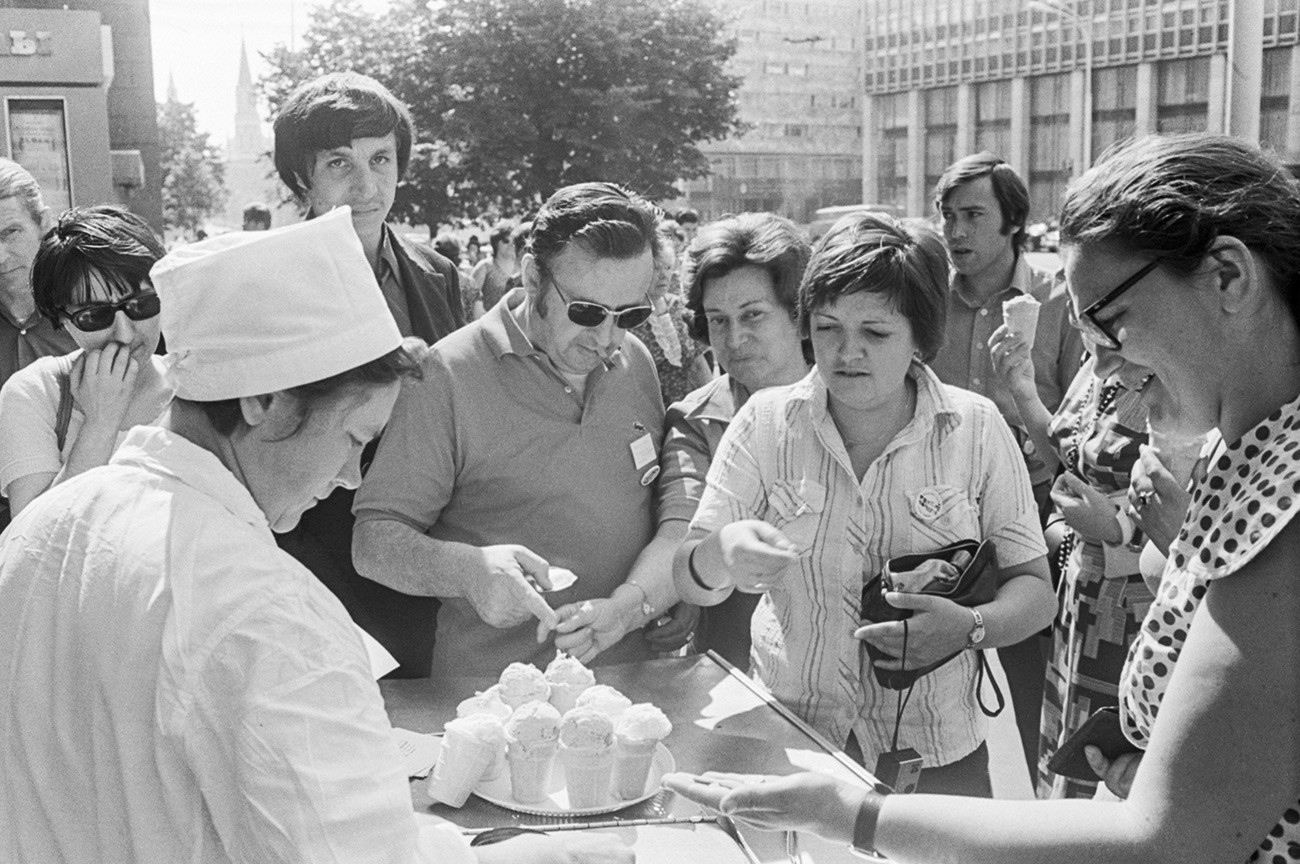
Tourists from France tasting Moscow ice-cream 1976
A.Kovtun/TASSChoosing the right people to work for Intourist was not an easy task. Guides had to have a university degree in linguistics and speak several languages, but in addition to this they had also to know what they could and could not talk about. A big part of this role was being able to competently point out the achievements of the Soviet system.
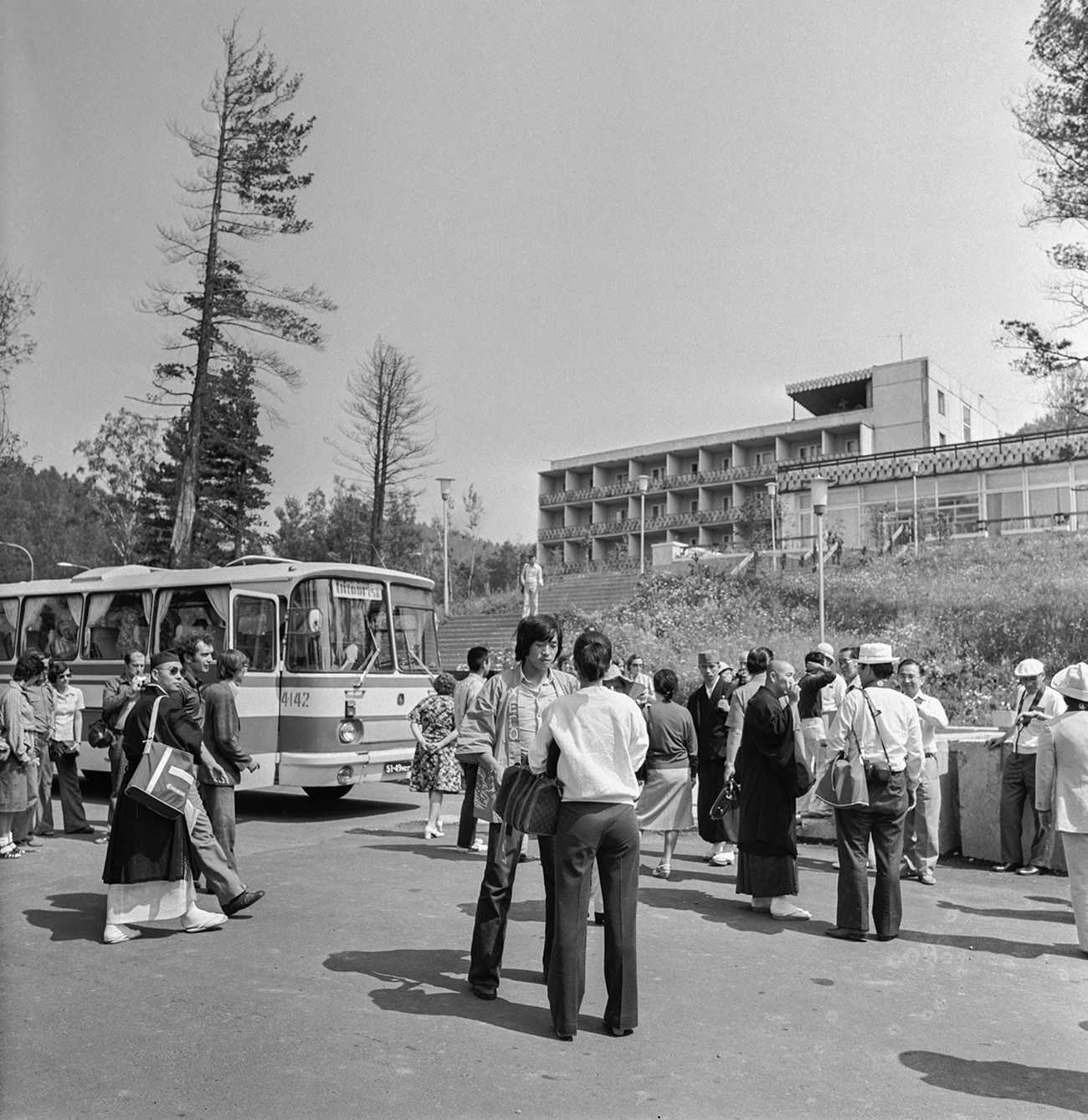
Japanese tourists during a trip to Lake Baikal, 1980
Edgar Bryukhanenko/TASSA former Intourist guide who worked for the company in the 1970-80s anonymously told Russian media that there were cases when young foreigners would sell Western items to Soviet citizens and then not know what to do with the rubles.
“Once, during a trip on the Trans-Siberian Railway, a group of students from the USA met a group of conscripts on the train and swapped clothes with them. The poor officer in charge of the conscripts was running up and down the train in search of an interpreter to make a reverse swap, and then locked his soldiers in a compartment so that they would not communicate with the tourists again.”
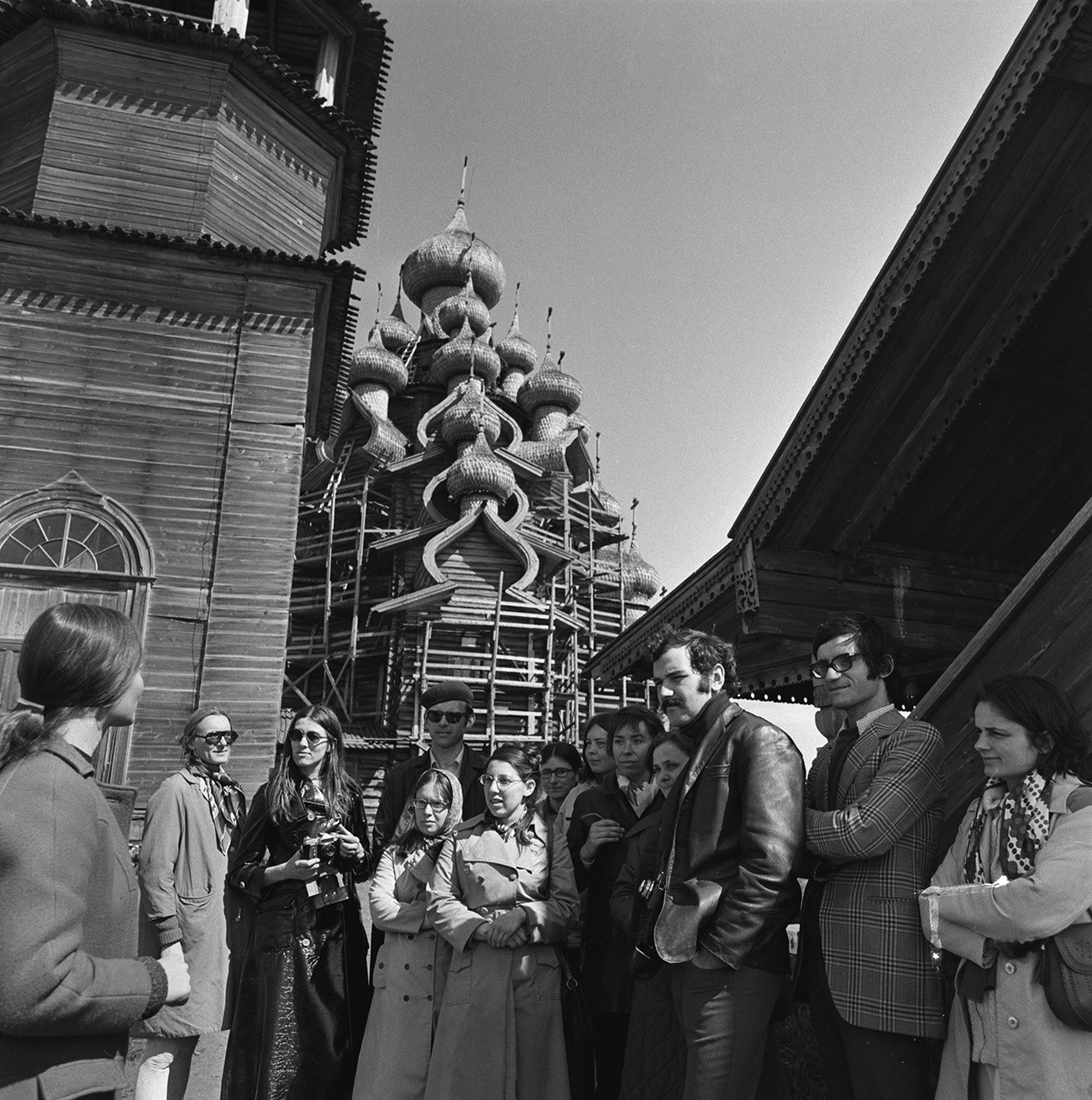
Foreign tourists visiting the museum of wooden architecture in Kizhi, 1972
Semen Meisterman/TASSAs a rule, foreign tourists' trips to the Soviet Union started in Moscow or Leningrad, which had the country's biggest airports. The rest depended on the type of the trip they had chosen.
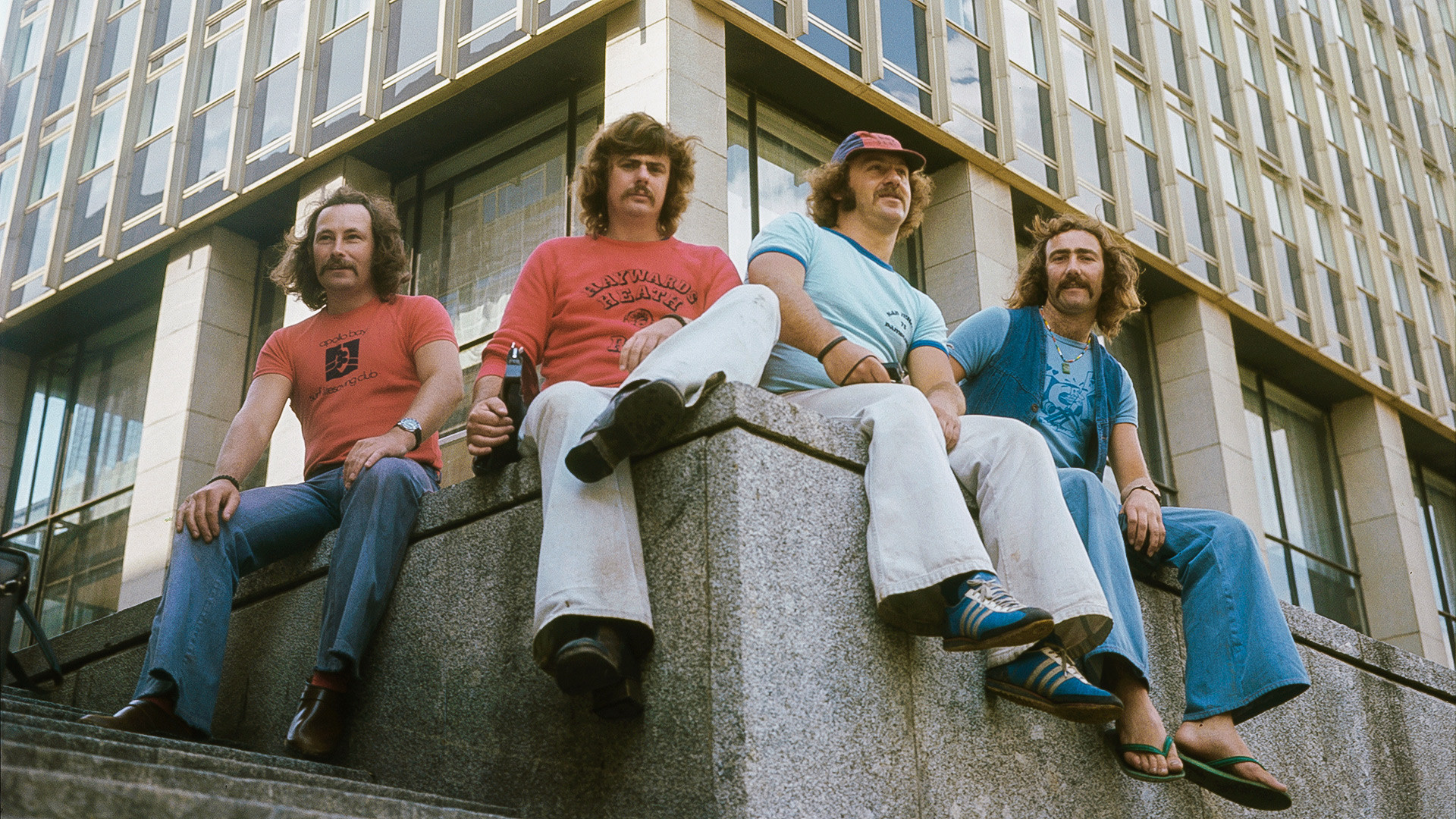
British tourists in Moscow (the Intourist hotel in the background), 1976
A.Kovtun/TASSIn the summer, Black Sea resorts were popular destinations. According to the TASS news agency, Crimea received some 4 million holidaymakers, including 30,600 foreign tourists from 40 countries, in 1968. The largest number of foreign visitors (8,200 people) came from West Germany, followed by the GDR (4,400), Czechoslovakia (3,500), Italy (3,100), and the United States (2,800). Two-thirds of foreign tourists arrived on cruise ships.

A group of tourists from the GDR in Alupka, Crimea. 1977
Yury Ilyenko/TASSIf foreign tourists visited the USSR in May or November, they were invariably taken to the demonstrations on May 1 or November 7.
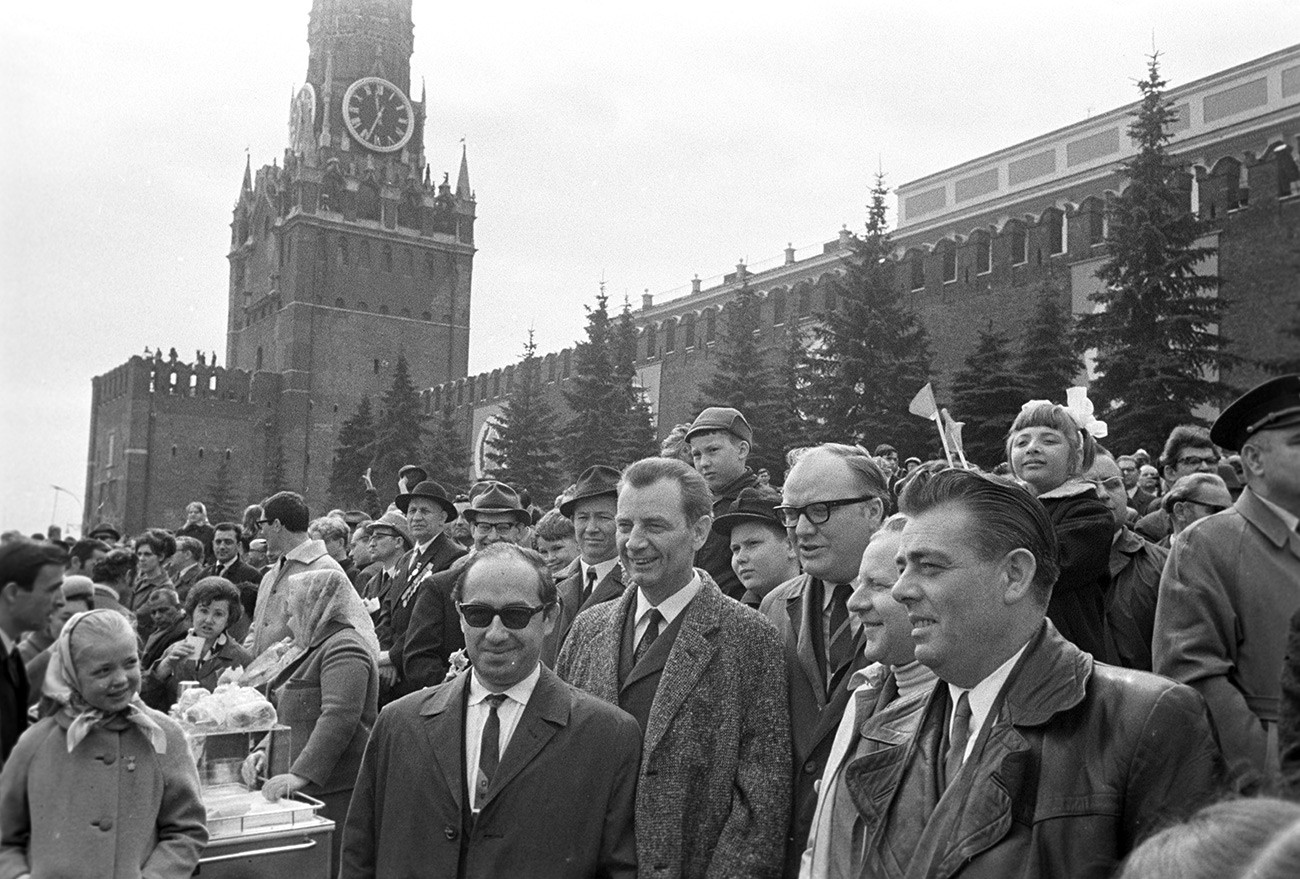
Foreign tourists during a demonstration in Red Square. May 1, 1970.
Vladimir Akimov/SputnikStudents and working youth, especially from socialist countries (East Germany, Czechoslovakia, Yugoslavia, Cuba), made for one notable special category of tourists. In 1959, an international camp called Sputnik opened in Gurzuf (Crimea) where foreigners and Soviet citizens aged 18-35 could spend their vacations. By the end of the 1970s, 180,000 tourists, including 70,000 foreigners, had visited the camp.
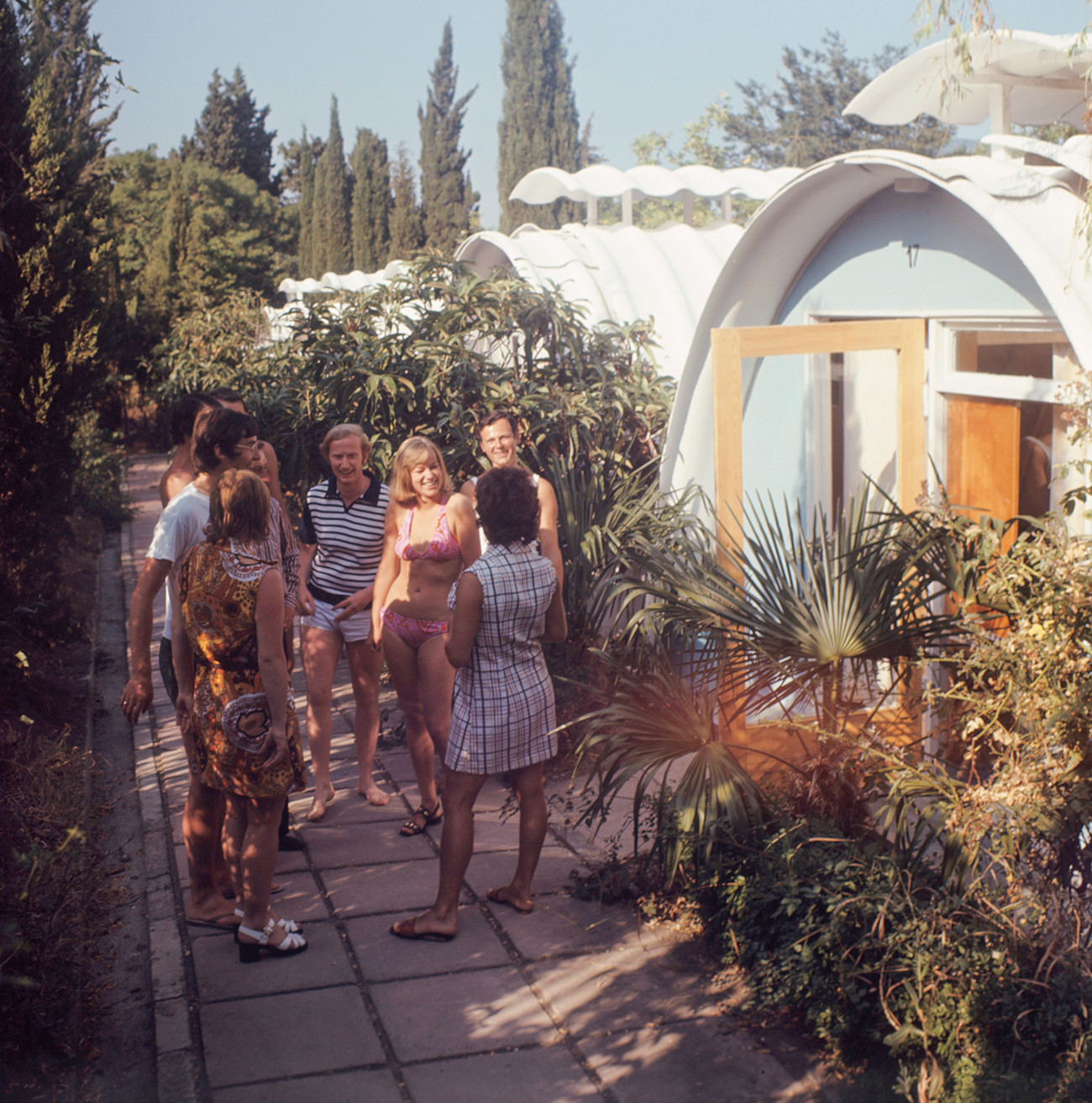
Young people from Leipzig, Germany, photographed at the Sputnik youth camp.
Boris Barabanov/SputnikCamps like these held a huge number of interesting events, ranging from meetings with Soviet athletes to discussions on global topics like disarmament. They also organized national days and, without fail, so-called “peace campfires.” Generally speaking, the focus was always on friendship between different countries and peoples. And, of course, there were excursions, hikes, and various sports competitions.
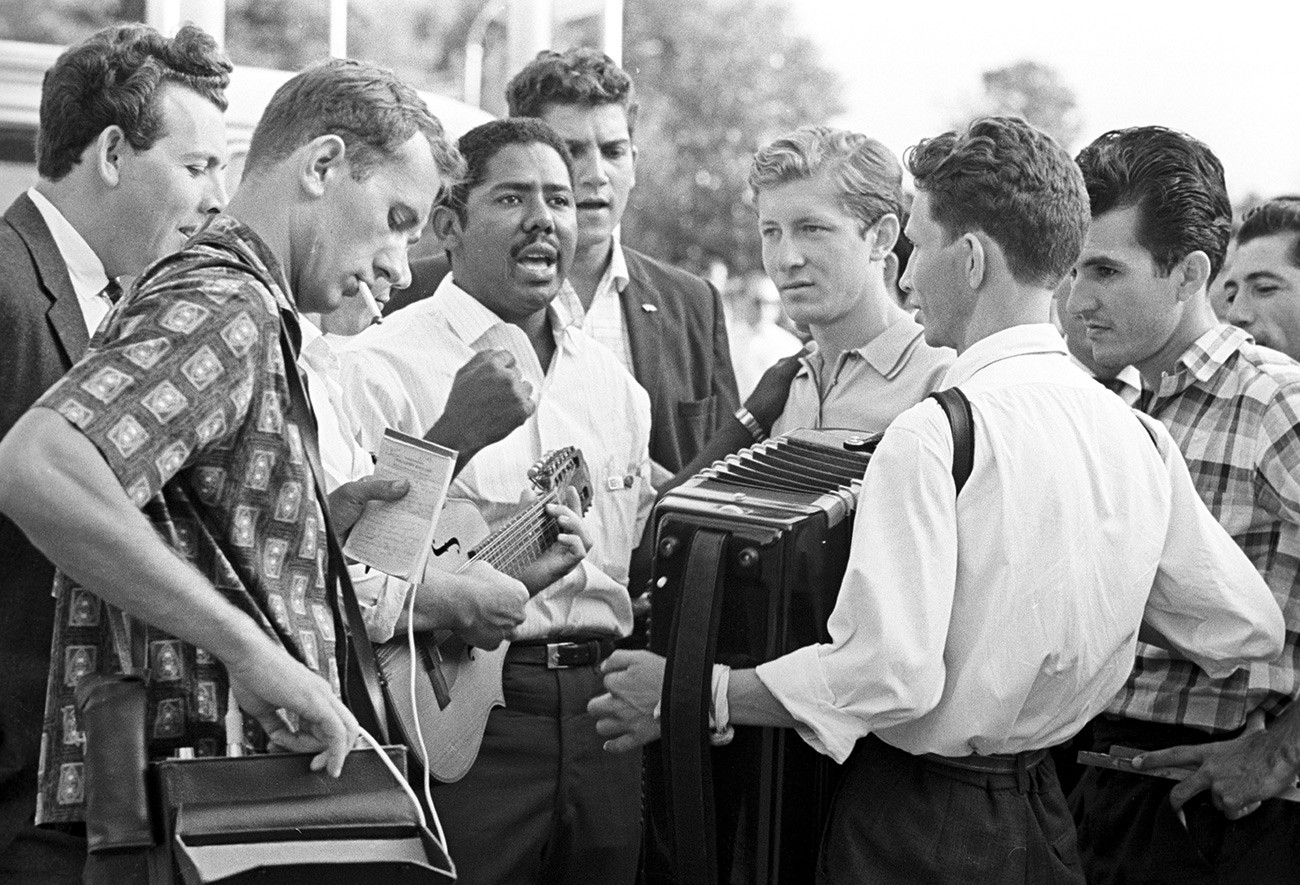
A Cuban youth delegation at the Sputnik international camp.
L.Nosov/SputnikNot surprisingly, spots at Sputnik were allocated only to “ideologically fit” Soviet students and the best-performing workers. However, the camp administration noted in their reports that in the end vacationers all the same "showed political apathy, an inclination to informal communication with foreigners, spending all their time on the beach and a dissipated lifestyle.”

Water skiing, a popular leisure activity at the Sputnik international camp in Gurzuf, Crimea
Alexander Mokletsov/SputnikIf using any of Russia Beyond's content, partly or in full, always provide an active hyperlink to the original material.
Subscribe
to our newsletter!
Get the week's best stories straight to your inbox